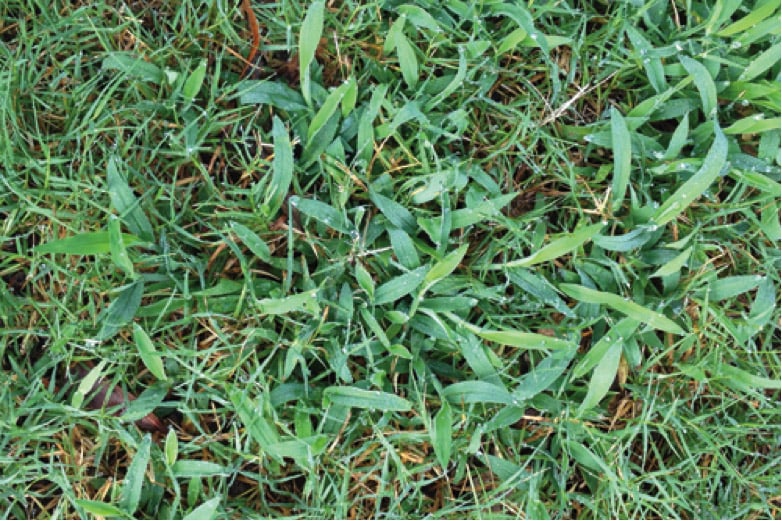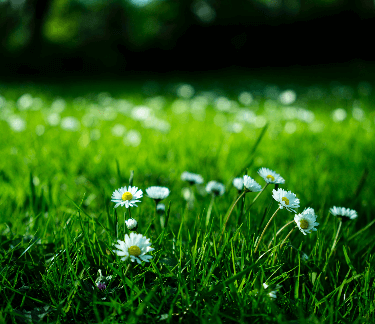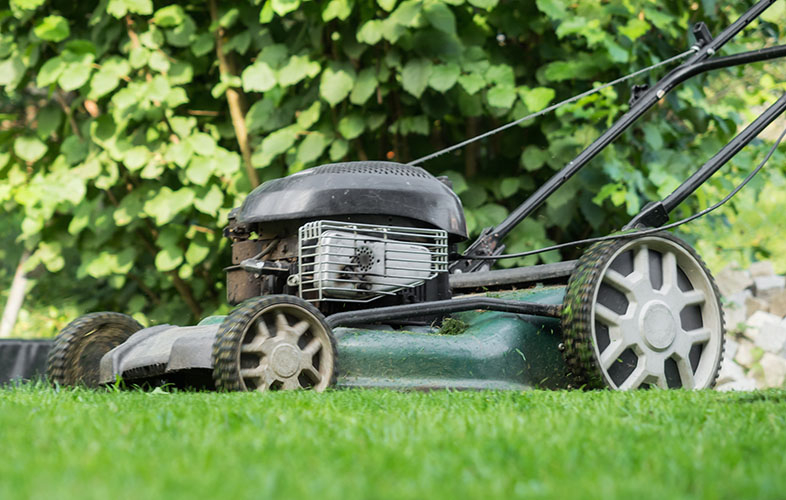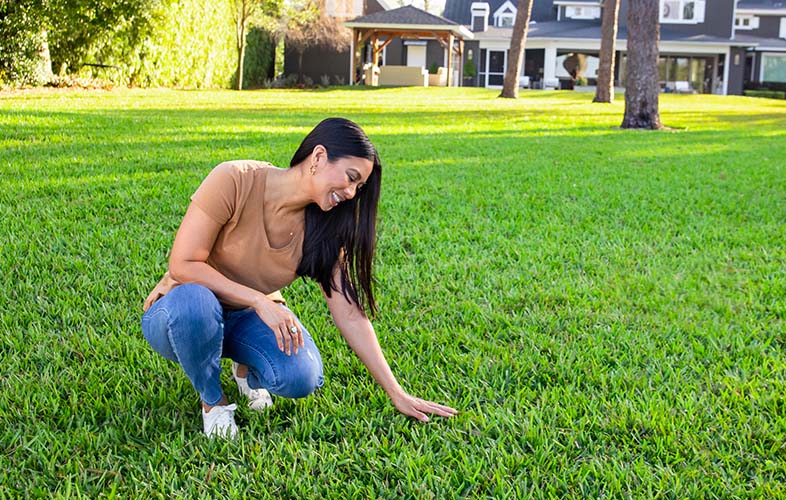If crabgrass is taking over your lawn, it's time to get in control. Learn how to tell crabgrass apart from other weeds and effectively prevent spreading.

The summer heat is a trigger for everyone’s least favorite weed: crabgrass.
This bothersome intruder grows rapidly and can aggressively overtake large patches of your lawn.
If a heat wave is rolling into your neighborhood and you find crabgrass in your lawn, then it’s time to step up your game. Learn how to tell crabgrass from other common weeds so you can fight off the invasion and put together a preventative battle plan.
What is crabgrass?
Crabgrass is an annual warm-season weed, which means it thrives in the heat and will sprawl anywhere it can find sunlight, water, and bare soil. Without proper prevention techniques and regular maintenance, a crabgrass invasion can quickly spiral out of control.
Crabgrass is a particularly pesky weed because of the speed that it proliferates. Once the seeds hidden in your soil begin to germinate, the weed will quickly spread out across your lawn and become tough to remove.
Tips for spotting crabgrass in your lawn
The most common question for people who suspect a crabgrass invasion is “what exactly does crabgrass look like?
The most distinguishing characteristic of crabgrass are its stems, which typically grow out rather than up. This also sheds some light on the name, as the weed often resembles a gangly bunch of crab legs sprawling out from the center.
Sometimes, it might be difficult to tell crabgrass apart from the grass in your lawn. But there’s a few key differences to spot the weed. Look out for:
- Leaves that are a lighter shade of green than the surrounding turf
- Leaves that are wider and broader than the other grass blades
- Clumps of coarse grass that create discolored patches
Don’t be fooled by crabgrass look-alikes
Different types of weeds certainly have plenty in common. They’re frustrating, unsightly and a non-stop nuisance when it comes to maintenance.
But each type of weed requires an individualized type of treatment and control technique, so it’s important that you don’t mistake crabgrass for its most common look-alikes.
Dallisgrass and Paspalum
Dallisgrass is prevalent in the South, with a closely related species of Paspalum occurring up the East Coast and in the Midwest. You’ll know the weed in your lawn is one of these two perennials if you see narrow spikelets that make up the crabgrass seed head.
Quackgrass
Quackgrass is a perennial that grows in the lawn much earlier in the year than crabgrass. If the weather is still quite cool and it looks like crabgrass has overtaken your yard, it’s likely quackgrass that you need to worry about treating.
Orchard Grass
Orchard grass grows much taller than crabgrass, usually growing just as crabgrass starts to emerge from seed. You can sometimes spot this perennial grassy weed from the flower head, which is a cluster of closely packed, rounded flowers.
Goosegrass
This is where it gets tricky. Goosegrass is an annual that grows in the summertime and closely resembles crabgrass, so it can be challenging to tell the difference. The main distinction is the goosegrass’ flat stems and its white, silvery center.
Tall Fescue
Although tall fescue can work wonders in the transition zone of the U.S., many consider this perennial turf to be a weed because of its coarse texture and vigorous growth. Typically, tall fescue is a dark shade of green when compared to crabgrass.
Crabgrass prevention with pre-emergent treatment
When dealing with a weed that has such a high reproductive rate, the most effective way to cut down on crabgrass is to prevent the weed from sprouting in the first place.
This may sound simple enough, but digging out the weed from the soil isn’t always enough. Crabgrass seeds are sneaky and can remain viable in the soil for up to three years!
Pre-emergent herbicides are key for preventing the growth of seedlings, but the timing of the application has to be just right.
Preventative treatment should be applied before the crabgrass emerges from the soil. Typically, crabgrass begins to germinate once soil temperature exceeds 55 to 60 degrees fahrenheit for at least one week.
For many regions of the U.S., soil temperatures grow warm enough to support crabgrass in the spring. Southern regions can reach this point as early as February, while northern zones generally don’t enter the crabgrass germination period until April.
To prevent future crabgrass invasions in your lawn, keep these temperatures and dates in mind. A TruGreen PhD-certified specialist can help you create a tailored lawn care plan that includes pre-emergent treatment and weed control.
Getting rid of crabgrass in your lawn
Is crabgrass already taking over your lawn this summer? Getting rid of this fierce weed requires post-emergent herbicides, which can kill off the crabgrass after it’s already begun to grow.
Because crabgrass is such a tough weed to eliminate, it may be time to bring in an expert. By applying lower volumes of herbicide with smaller spray droplets, the TruGreen technique allows for targeted control of crabgrass and other aggressive weeds.
Time to get crabgrass under control with TruGreen
A thick, healthy lawn stands a much better chance of resisting a crabgrass takeover than one with exposed soil and an irregular watering schedule. In addition to pre-emergent treatment in the spring, starting a regular maintenance plan for your lawn can set you up for success all year long.
For help kicking crabgrass to the curb, call TruGreen today at 800.464.0171 or scroll up to the green box to request a quote.













